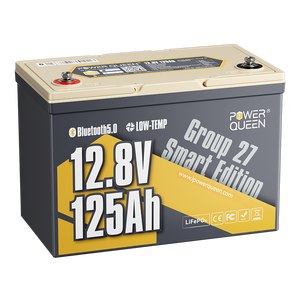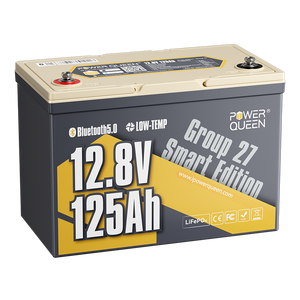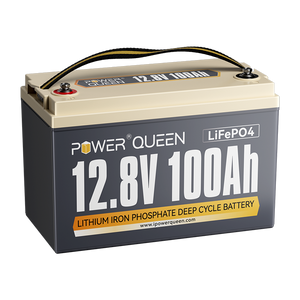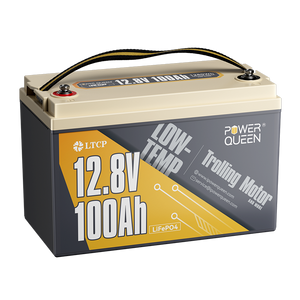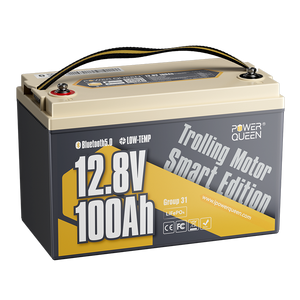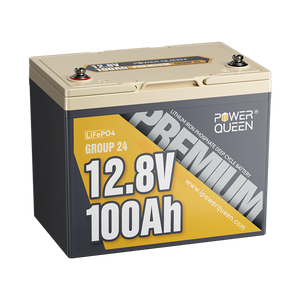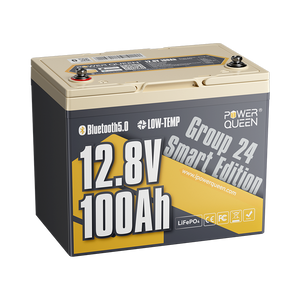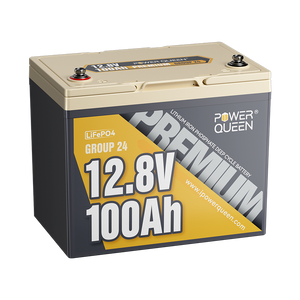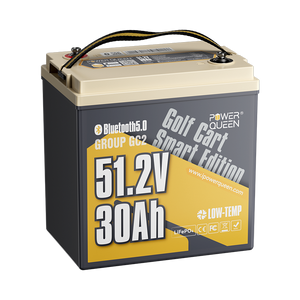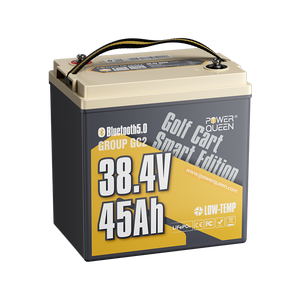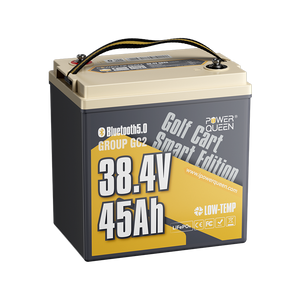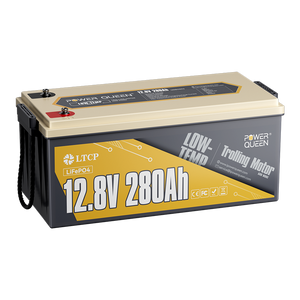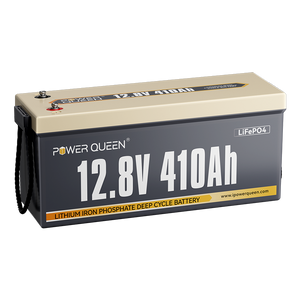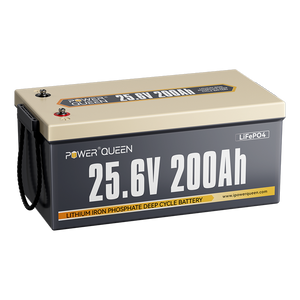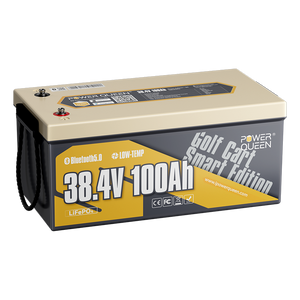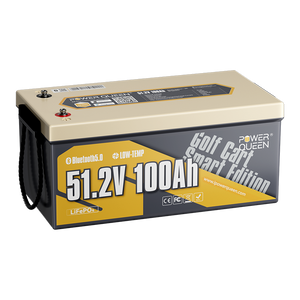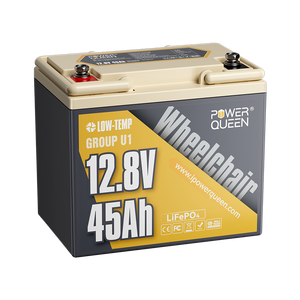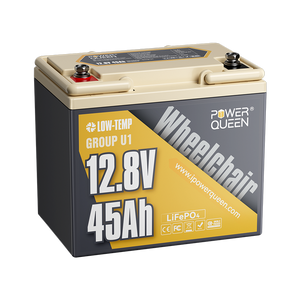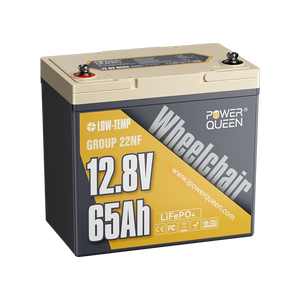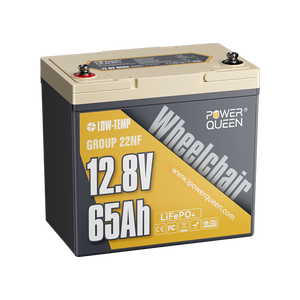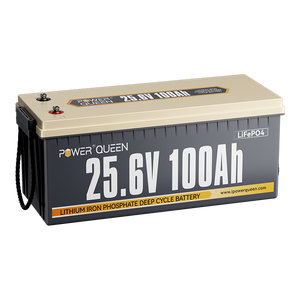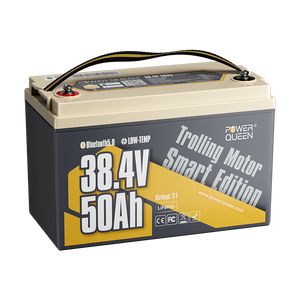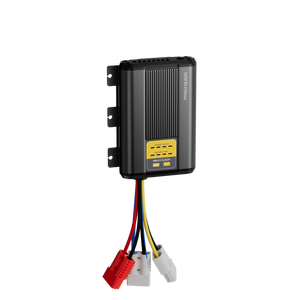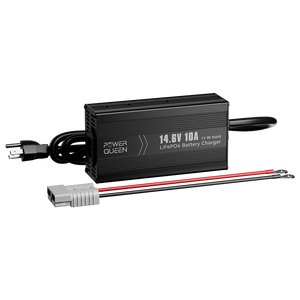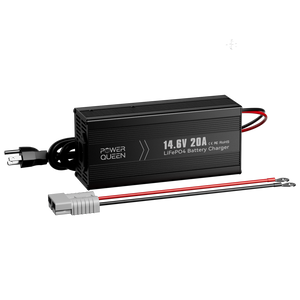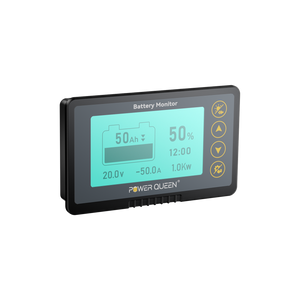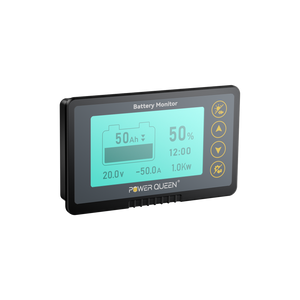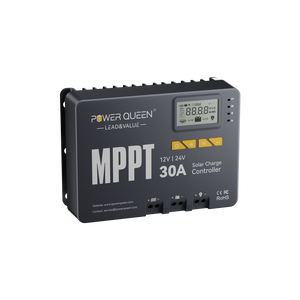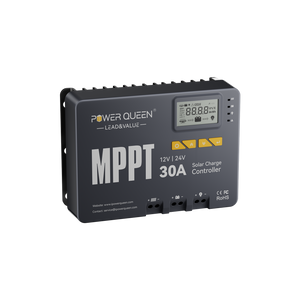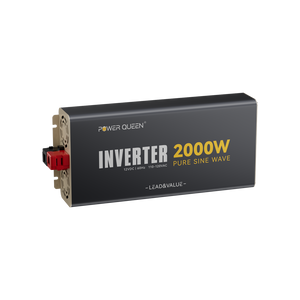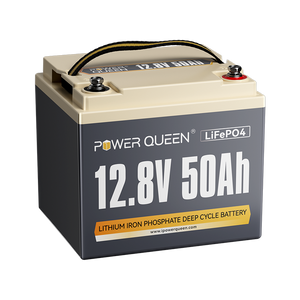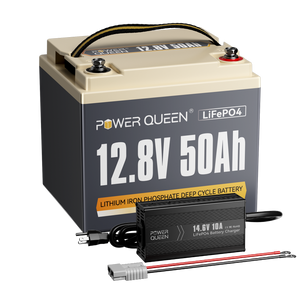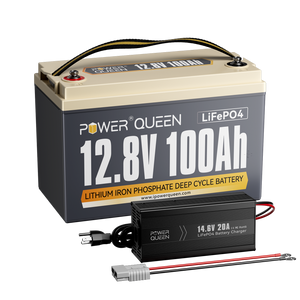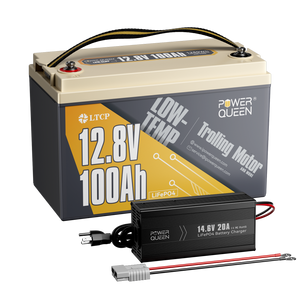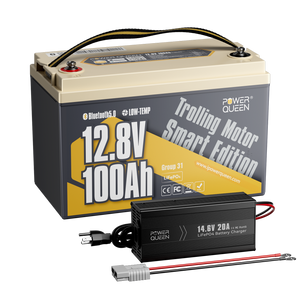How To Maintain A Lithium Battery
As the globe shifts toward sustainable energy solutions, lithium batteries have emerged as a game changer in recreational vehicles (RVs), marine vessels, and golf carts. These high-performance batteries have a longer lifespan, faster charging times, and are less in weight than ordinary lead-acid batteries. However, appropriate maintenance is essential for maximizing their performance and lifespan.
In this post, we'll go over the most important techniques for maintaining lithium batteries in RVs, marine vehicles, and golf carts, assuring peak performance and longevity.
Table of Content
- Part 1. What is A LFP Battery
- Part 2. Maintaining the Longevity of Rechargeable Lithium Iron Batteries
- 2.1 Inspect the Battery Condition Regularly
- 2.2 Charge The Battery Properly
- 2.3 Store the Battery Well
- Part 3. Keeping the Battery Away from Terminal Corrosion
- Part 4. Conclusion
Part 1. What is A LFP Battery
An LFP battery is a form of lithium-ion battery in which lithium iron phosphate serves as the cathode material. LFP stands for "lithium iron phosphate," the chemical component found in the battery's cathode. This type of lithium-ion battery is distinguished by its high energy density, long cycle life, and advanced safety features.
LFP batteries are useful in a variety of applications due to their stable chemistry, thermal stability, and resistance to thermal runaway, making them a safer alternative to other lithium-ion batteries. They are widely used in electric vehicles (EVs), renewable energy storage systems, backup power systems, and other applications requiring high energy density and extended life.
Key advantages of LFP batteries include:
1. Safety: LFP batteries are thought to be safer than other lithium-ion batteries because of their stable chemistry and resistance to thermal runaway, which makes them less susceptible to overheating and combustion.
2. Long Cycle Life: LFP batteries can sustain a large number of charge-discharge cycles, making them ideal for applications requiring durability and longevity.
3. High Energy Density: LFP batteries have a high energy density, which allows them to store a large amount of energy in a small space, making them ideal for usage in electric vehicles and energy storage systems.
4. Fast Charging: LFP batteries support higher charging rates than certain other lithium-ion battery types, making them particularly suitable for applications that demand fast-charging performance.
5. Environmental Friendliness: Lithium iron phosphate is regarded more environmentally benign than other lithium-ion battery chemistries because it does not contain cobalt, which has been linked to environmental and ethical difficulties in mining.
Because of these advantages, LFP batteries have become a popular alternative for a variety of energy storage and mobile power applications, providing a good balance of performance, safety, and longevity.
Suggest reading: AGM vs. Lithium Batteries: Which Is Better for RVs and Marine Use?
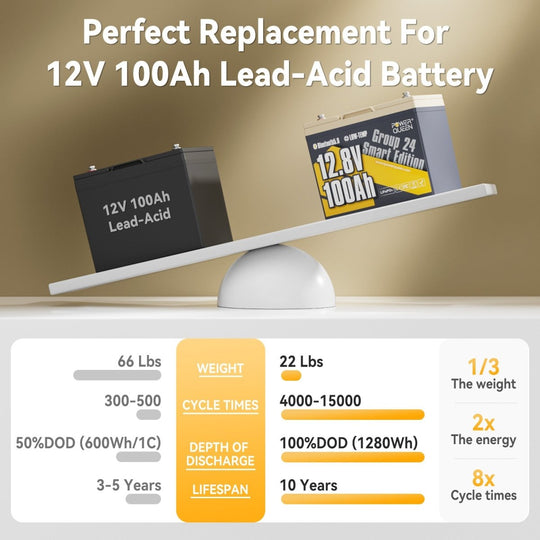
Power Queen 12V 100Ah Group 24 Smart Deep Cycle Lithium Battery
Part 2. Maintaining the Longevity of Rechargeable Lithium Iron Batteries
Rechargeable lithium iron batteries have a limited lifespan and gradually lose their ability to hold a charge over time. Once a battery's capacity has been exhausted, the damage is irrevocable. As a result, it is critical to keep your lithium battery in good working order.
2.1 Inspect the Battery Condition Regularly
A lithium iron battery has an estimated lifespan of 10 to 15 years, depending on its usage. Power Queen LiFePO4 batteries can withstand up to 4000 full charging cycles or up to 15000 partial charges. A full charging cycle entails taking the battery from full charge to full discharge and then fully charging it. Allowing your batteries to sit unused for an extended period of time will shorten their lifespan and can lead to battery failure if left ignored for too long.
Power Queen recommends that all lithium batteries and cells that are not in use go through at least one full maintenance cycle (charge to 100% state of charge, discharge to 100% depth of discharge, and charge to 50% state of charge) every 6-12 months to retain the battery's capacity. Please ensure that the batteries and cells in storage retain an acceptable open circuit voltage (OCV). Use the table below to determine the minimum required voltage for storage. If the voltage drops below this number during your maintenance check, Power Queen suggests that you recharge your battery to the upper end of the voltage ranges listed below.
|
Voltage Range (V) |
Battery System |
|
3.3-3.4 |
Individual cell |
|
13.2-13.6 |
12V Battery |
|
26.4-27.2 |
24v Battery |
|
39.6-40.8 |
36V Battery |
|
52.8-54.4 |
48V Battery |
When performing semi-annual voltage checks on cells or batteries, make sure to check for terminal corrosion and casing integrity. Do not use any battery or cell that has evidence of damage.
Regardless of how well you maintain and store your battery, LiFePO4 batteries will continue to slowly self-discharge while in storage and not in use, at a rate of 1%-3% per month, which is significantly lower than lead acid batteries. If your battery has functions such as Bluetooth, the self-discharge rate will increase due to the Bluetooth module's pull. Regularly monitoring your battery's charge will assist keep it healthy and increase its energy output for your specific application.
Monitoring your application's runtime is a simple at-home approach for assessing the battery's status. When purchasing a new lithium battery, keep track of the initial run time it gives for your application. This initial run time will be used as a baseline for comparison as your battery ages, allowing you to assess its health. The run time will vary depending on the application and configuration you are using.
2.2 Charge The Battery Properly
A lithium-specific battery charger is the best option for assuring a full charging cycle every time. Power Queen LiFePO4 battery chargers use an advanced 3-step charging algorithm that effectively charges even deeply drained batteries. Furthermore, to improve battery performance and longevity, our innovative charging technology increases battery capacity while charging.

When it comes to extending the life of a lithium battery, charging speed is critical. Chargers are selected based on a fraction of the battery's capacity. For example, a lithium battery can be charged at a rate of up to 1C (equal to the battery's capacity), whereas a lead acid battery should be charged at a rate of less than C/3. This indicates that a 10Ah lithium battery can be charged at 10 amps, while a 10Ah lead acid battery should be charged at approximately 3 amps.
To extend the life of a lithium battery while minimizing downtime, we recommend charging your LiFePO4 battery at 0.2C but not faster than 0.5C. In the case of a 100Ah battery, this translates to a charge rate of 20A to 50A, with 20A being the preferred option. For example, if you were contemplating chargers and had the choice between a 20A charger and a 50A charger, we would recommend the 20A charger. While the 50A charger may take approximately 2 hours to charge, it may shorten the battery's life. The 20A charger, on the other hand, may take up to 5 hours to charge but will extend the life of the battery.
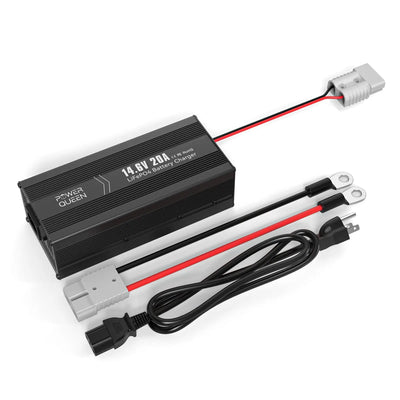

Furthermore, charging the battery with the correct voltage is critical; this is the charging voltage that Power Queen advises.

Charging the battery below freezing temperature is not recommended. If you live in a location where the winter is harsh, a battery with low-temperature charging-off protection and a self-heating capability is essential.
2.3 Store the Battery Well
When storing batteries for an extended period of time, it's crucial to understand that SLA and lithium batteries have different storage requirements.
The chemical composition of the battery determines the best state of charge (SoC) for storage. SLA batteries should be stored as near to 100% SoC as possible to avoid sulfating, which causes sulfate crystals to accumulate on the lead plates and lowers battery capacity. In contrast, lithium batteries should be stored at approximately 50% SoC to preserve positive terminal stability and prevent permanent capacity loss. This guide on storing lithium batteries provides specific advice for long-term lithium storage.
Another element to consider is the self-discharge rate. SLA batteries have a high self-discharge rate, thus it's best to keep them on a float or trickle charge to keep them near 100% SoC and avoid sulfation and permanent capacity loss. Lithium batteries, on the other hand, with their slower discharge rate, may require minimum maintenance charging if the battery is not subjected to parasitic loads such as a Bluetooth module.
Part 3. Keeping the Battery Away from Terminal Corrosion
Lithium batteries, including lithium-ion and lithium polymer batteries, are less prone to terminal corrosion than typical lead-acid batteries. This is because lithium batteries use different chemistries and materials that are less prone to the sorts of corrosion found in lead-acid batteries.
While lithium batteries are more resistant to corrosion, they are not impervious to all types of degradation. It's worth noting that lithium batteries can still have terminal difficulties, but to a lower extent. Exposure to moisture, severe temperatures, and physical damage can all have an influence on lithium battery terminals and connections.
So follow these two principles to limit the likelihood of lithium battery terminal corrosion:
- Keeping your batteries cool and dry is a simple way to reduce corrosion. This not only reduces corrosion, but also increases the battery's shelf life and overall lifespan. To successfully prevent corrosion, consider sealing your terminals with a spray-on protectant, which is readily available at most auto parts stores.
- Regularly examining your lithium battery terminals for filth and cleaning them with a soft, dry cloth before use will prevent the creation of a significant deposit that may be difficult to remove later.
While lithium batteries have a lower chance of terminal corrosion, it is still a good idea to follow battery care best practices to maximize their longevity and performance.
Part 4. Conclusion
Lithium batteries have transformed the power storage market by providing unprecedented performance and efficiency. By following these maintenance procedures, owners of RVs, marine vessels, and golf carts can ensure that their lithium batteries continue to provide reliable power for years to come. Maintaining lithium batteries requires proper charging, temperature management, regular inspections, precise installation, and monitoring of the Battery Management System.
By following these instructions, enthusiasts may make the most of their lithium batteries, improving their overall experience with their recreational vehicles and equipment.
